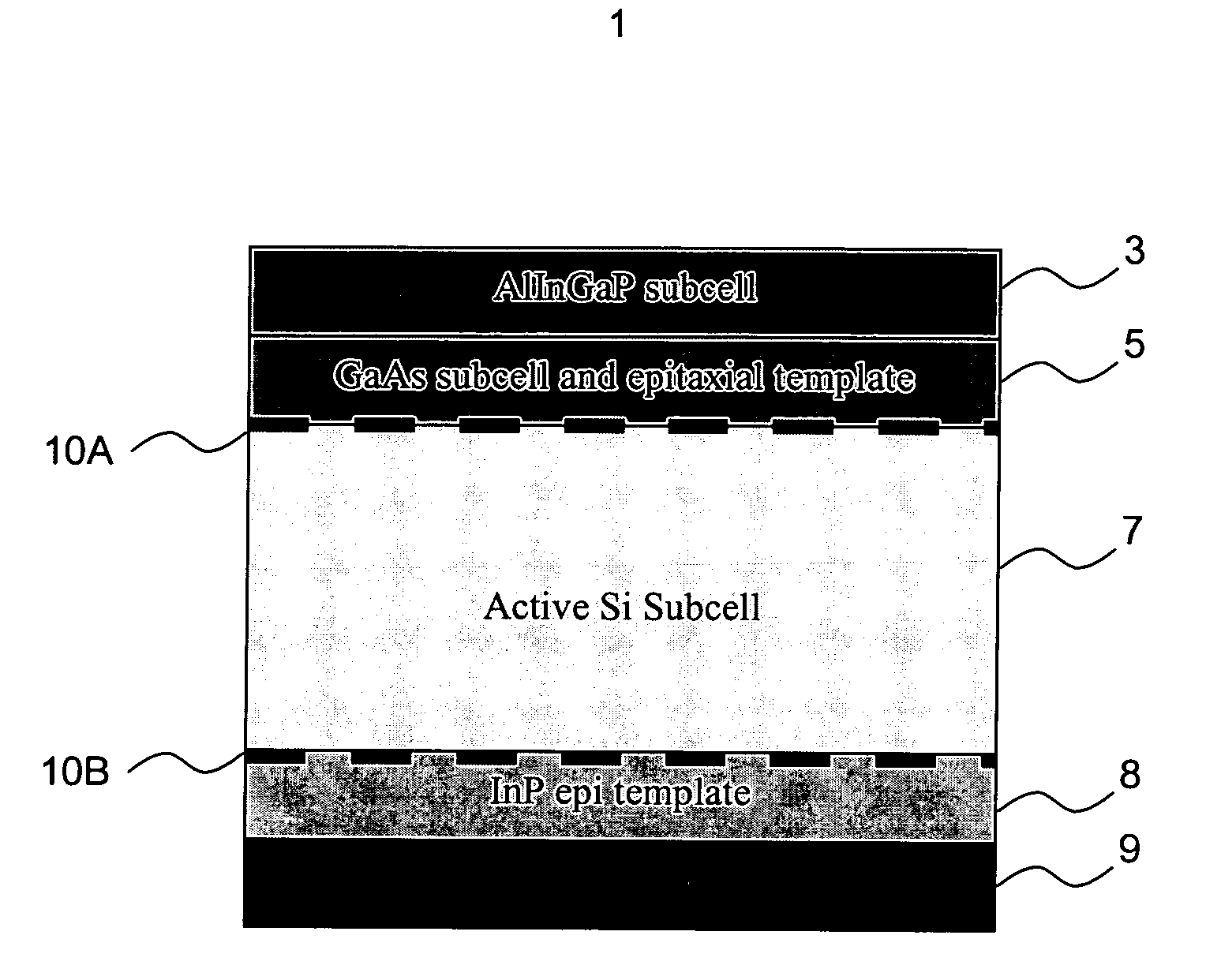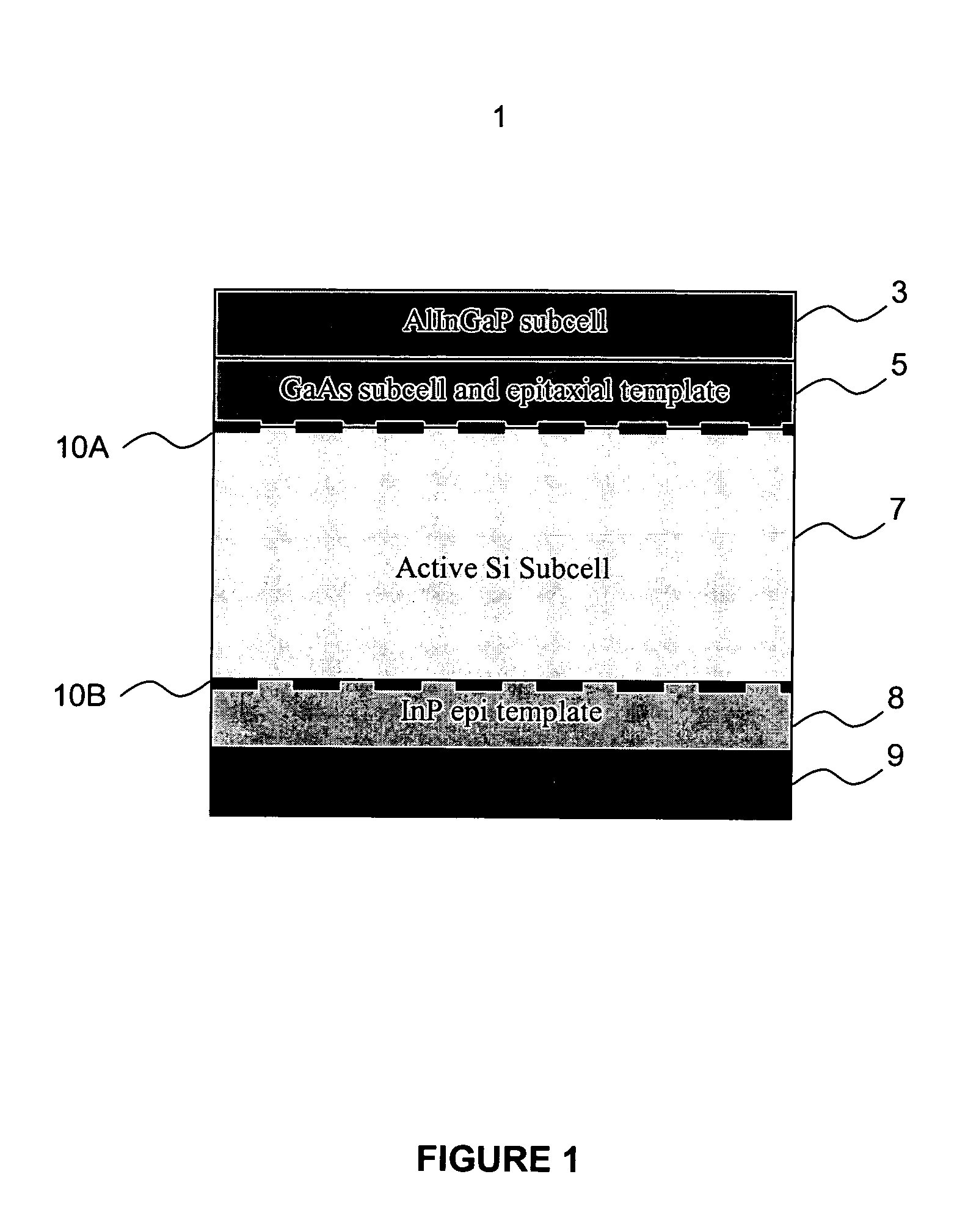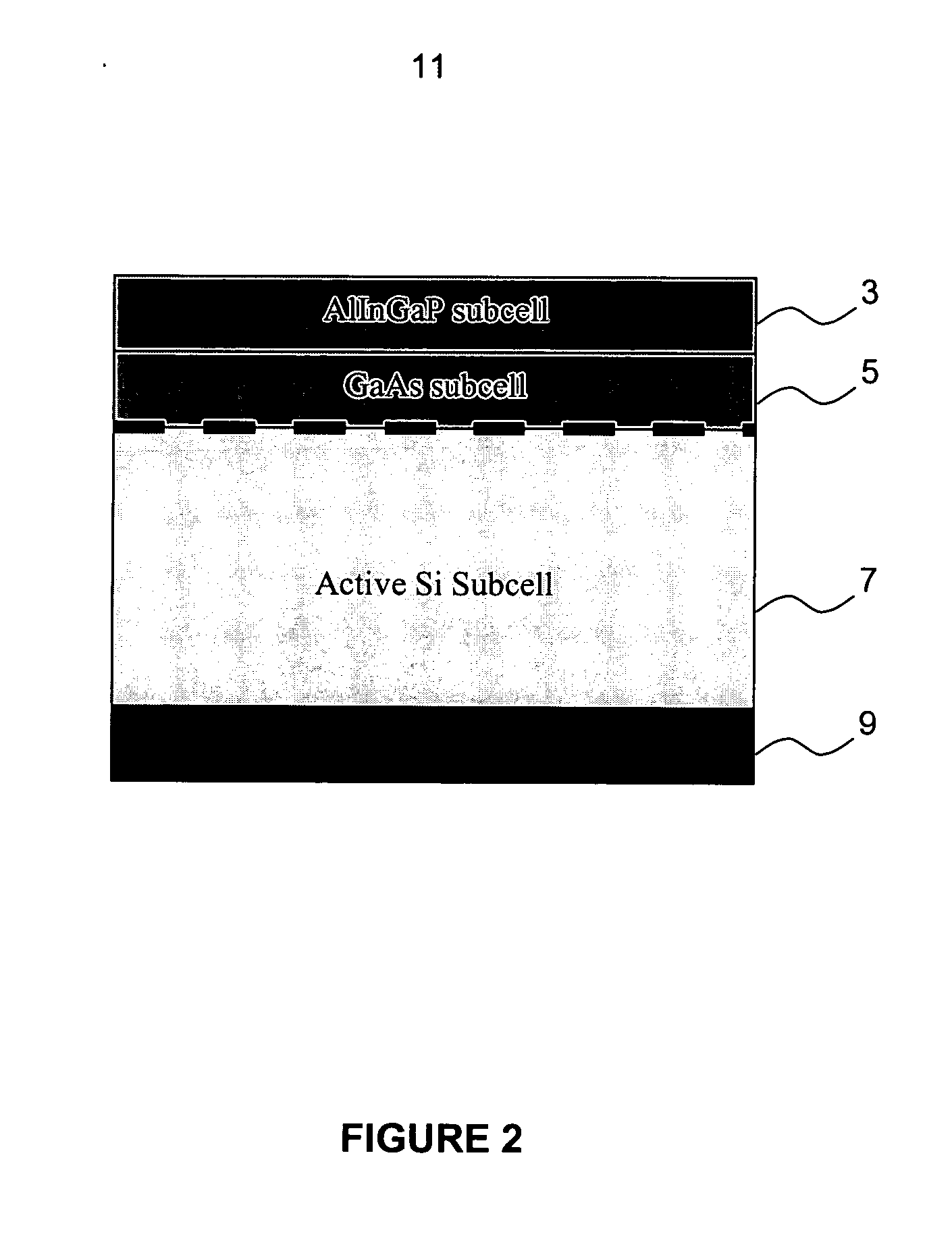Multi-junction solar cells and methods of making same using layer transfer and bonding techniques
- Summary
- Abstract
- Description
- Claims
- Application Information
AI Technical Summary
Problems solved by technology
Method used
Image
Examples
first embodiment
ells Based on Active Si Sub-Cells
[0011] In the first embodiment of the invention, a multi-junction solar cell comprises an active silicon subcell, a first non-silicon subcell bonded to a first side of the active silicon subcell and a second non-silicon subcell bonded to a second side of the active silicon subcell. The first subcell comprises a p-n junction in a first non-silicon semiconductor material and the second subcell comprises a p-n junction in a second non-silicon semiconductor material different from the first semiconductor material. Preferably, the active silicon subcell comprises a silicon wafer containing a p-n junction. This forms a triple-junction solar cell in which the silicon subcell comprises a middle subcell with the other two non-silicon subcells being bonded to opposite sides of the silicon subcell.
[0012] If a four junction solar cell is desirable, then the solar cell further comprises a third non-silicon subcell comprising a p-n junction in a third non-silicon...
second embodiment
e
[0026] In a second embodiment of the invention, wafer bonding enables high-performance III-V and group IV solar cells to be bonded to flexible substrates. FIGS. 5 and 6 show two exemplary configurations for such a cell on a flexible substrate. In FIG. 5, a solar cell 41 comprised of AlInGaP and GaAs p-n junction subcells 3, 5 is bonded to a metallic bonding layer 43 that also serves as a backside electrical contact for the solar cell 41. The metal bonding layer 43 is formed over a flexible substrate, such as a flexible polymer substrate 45. A bonded interface 10 is located between subcell 5 and the metal layer 43.
[0027]FIG. 6 shows another exemplary solar cell 51. In this case, the subcells 3, 5 are directly bonded to a flexible, electrically-conductive polymer substrate 55. In this case, the metal layer 43 may be omitted because the polymer substrate is conductive and acts as a backside electrical contact. If the conductive substrate 55 is optically transparent, then it can act a...
third embodiment
Structure
[0029] The solar cells described herein may be made using an intermediate or temporary handle structure during fabrication. For example, one handle structure comprises a thin semiconductor film or layer that acts as an epitaxial template that has been bonded to an inexpensive handle substrate.
[0030] An intermediate handle structure is generally used herein to refer to a low-cost mechanical handle substrate that supports a thin transferred layer of semiconductor material. That semiconductor material then serves as an epitaxial template for the growth of a solar cell device structure. The design of the handle structure is such that following the fabrication of a solar cell device on the handle structure, the solar cell can be bonded to a secondary substrate or support, such as a Si substrate or a flexible film, as described in the first two embodiments. The handle substrate may comprise a semiconductor substrate or wafer, or a glass, plastic, metal or ceramic substrate. Upon...
PUM
 Login to View More
Login to View More Abstract
Description
Claims
Application Information
 Login to View More
Login to View More - R&D
- Intellectual Property
- Life Sciences
- Materials
- Tech Scout
- Unparalleled Data Quality
- Higher Quality Content
- 60% Fewer Hallucinations
Browse by: Latest US Patents, China's latest patents, Technical Efficacy Thesaurus, Application Domain, Technology Topic, Popular Technical Reports.
© 2025 PatSnap. All rights reserved.Legal|Privacy policy|Modern Slavery Act Transparency Statement|Sitemap|About US| Contact US: help@patsnap.com



